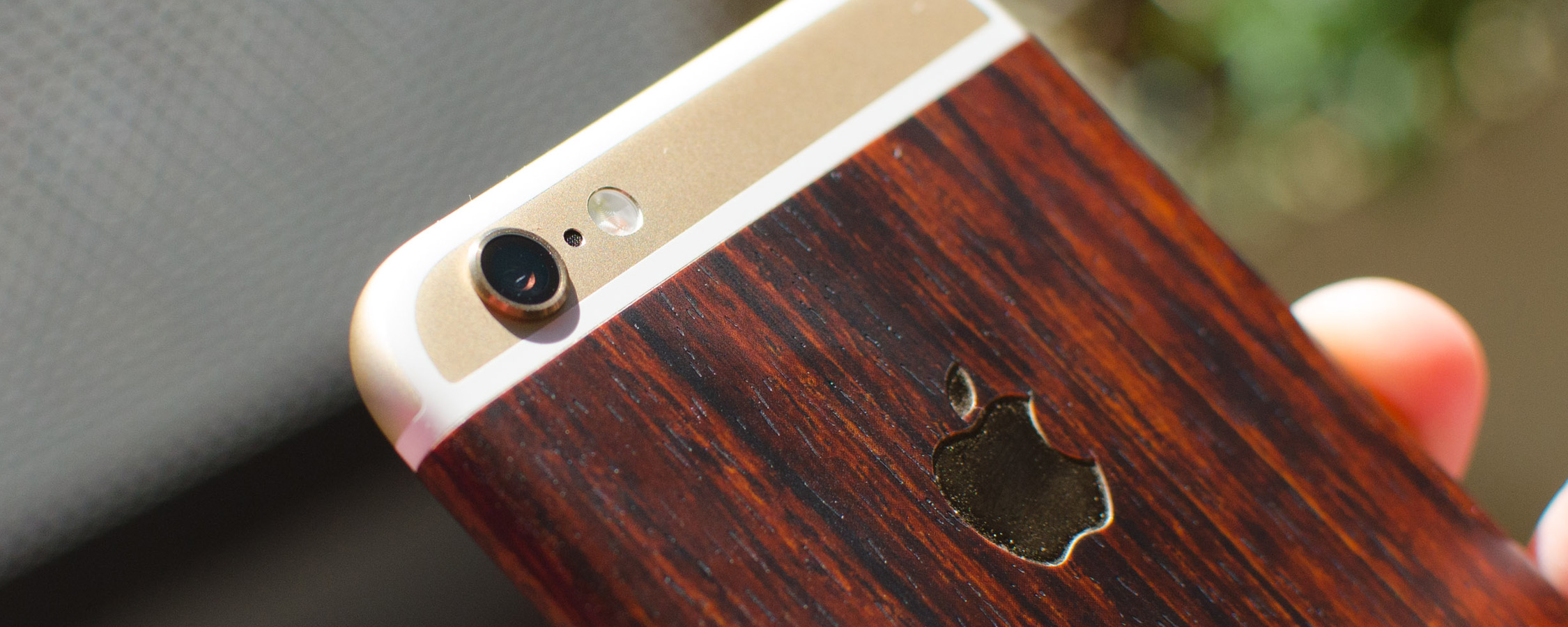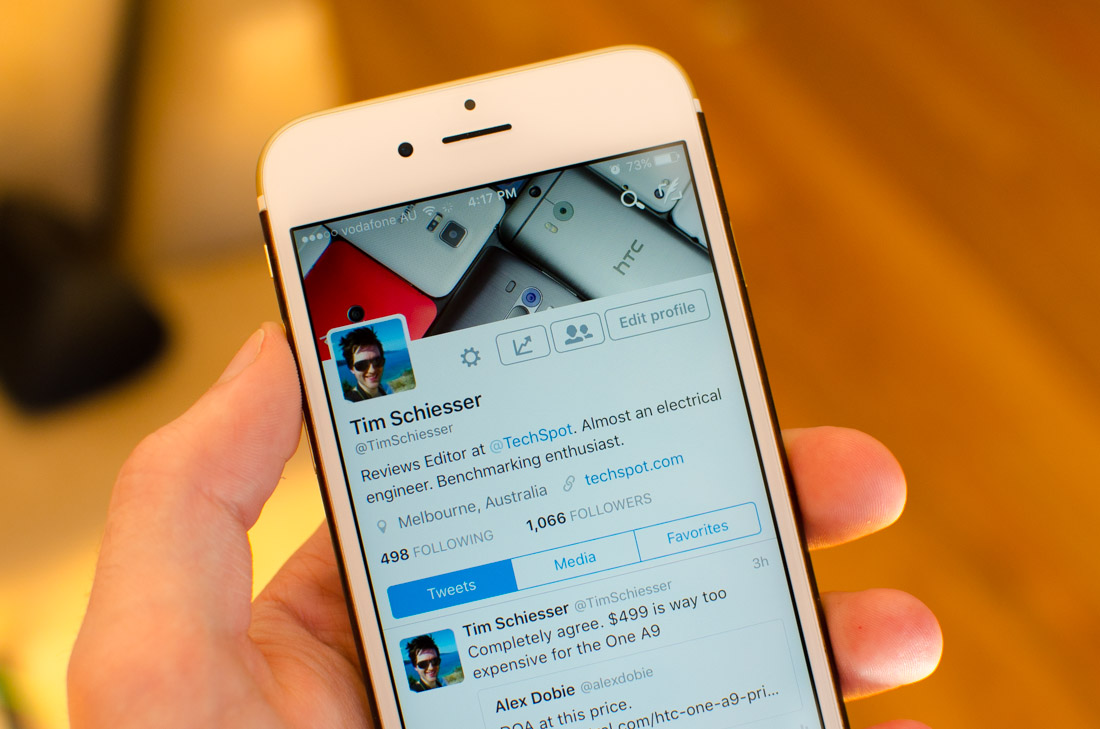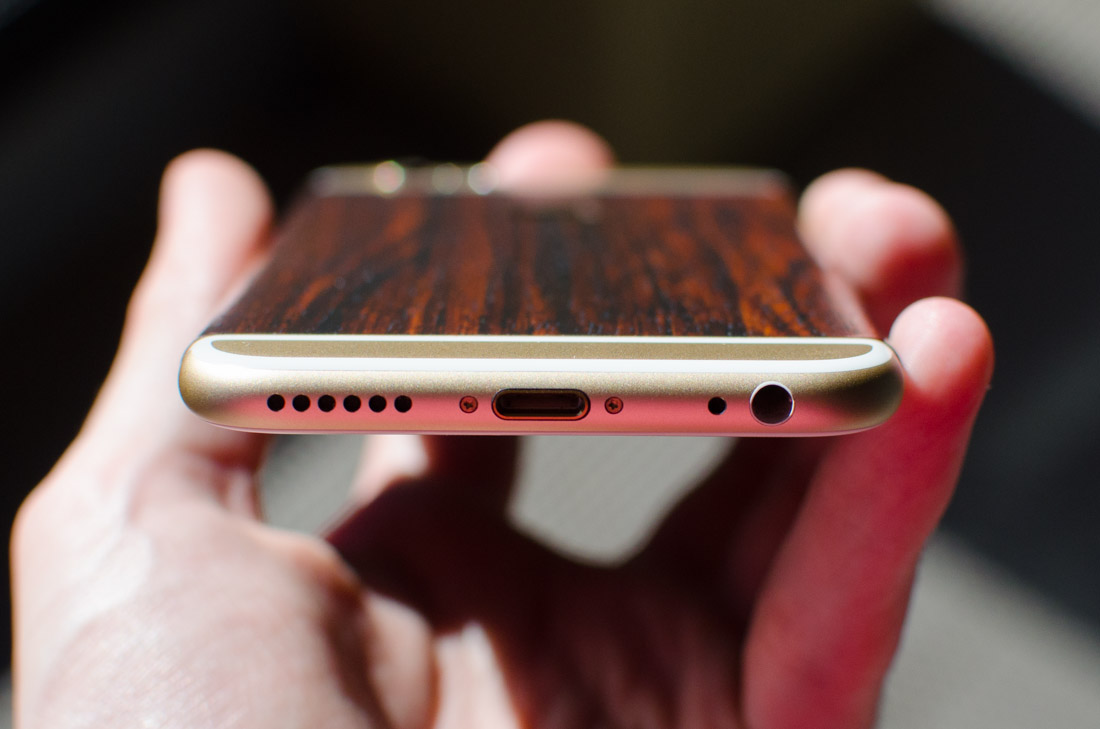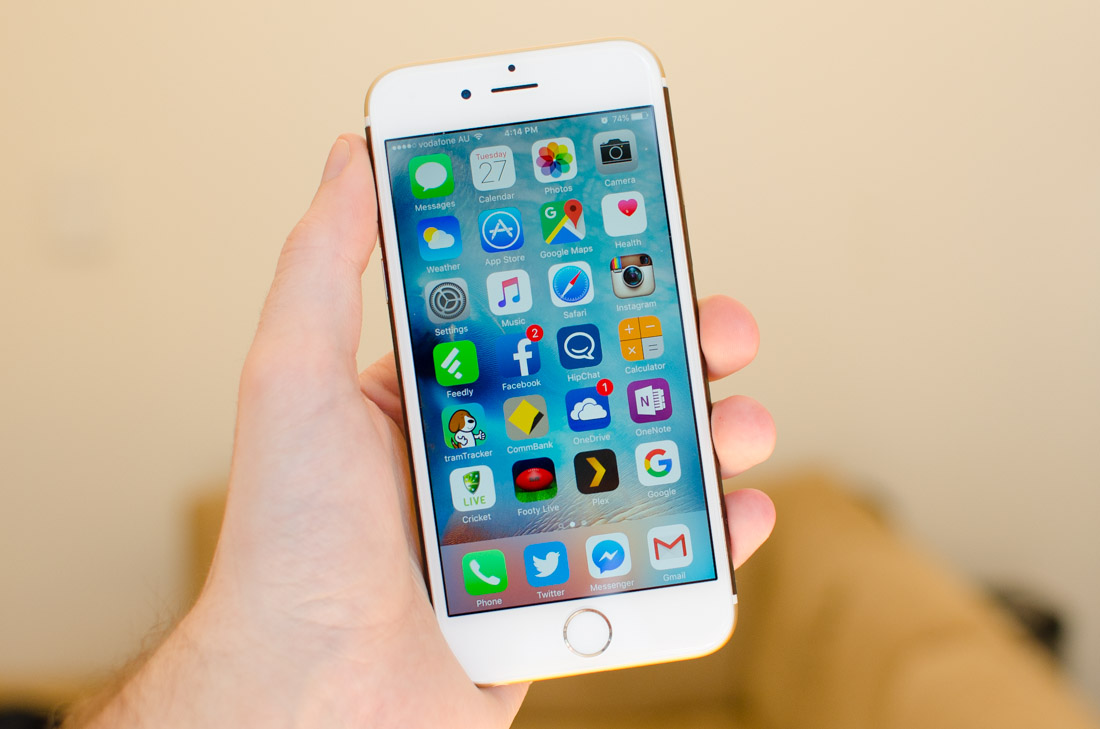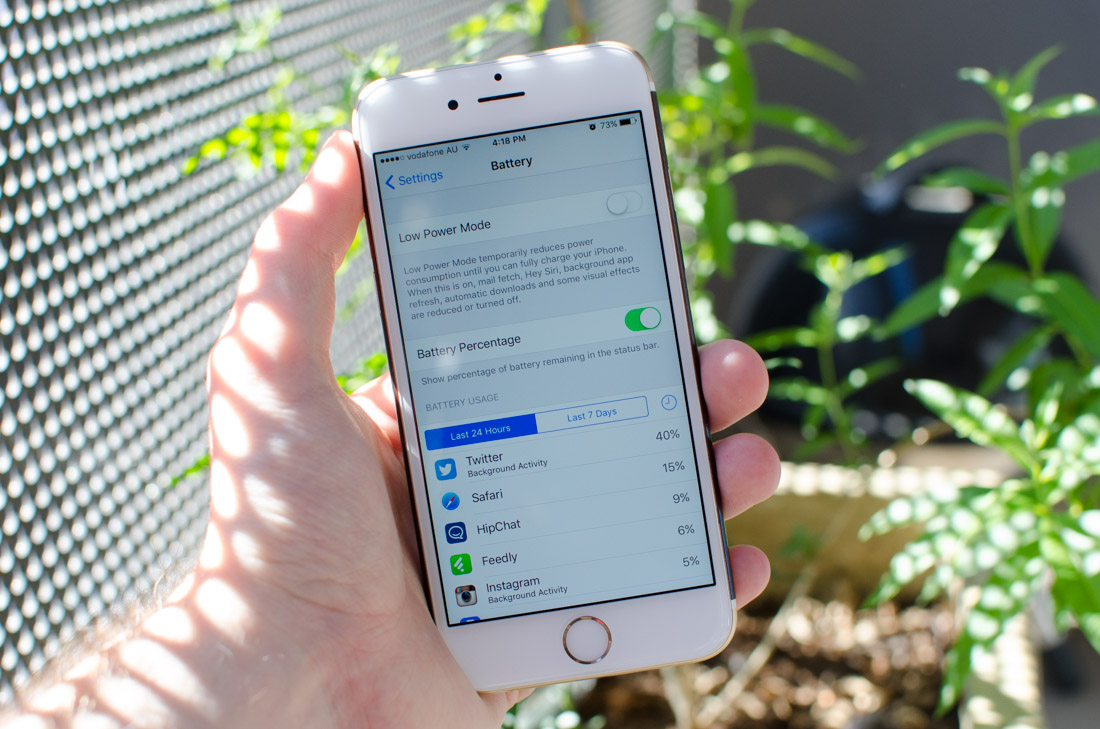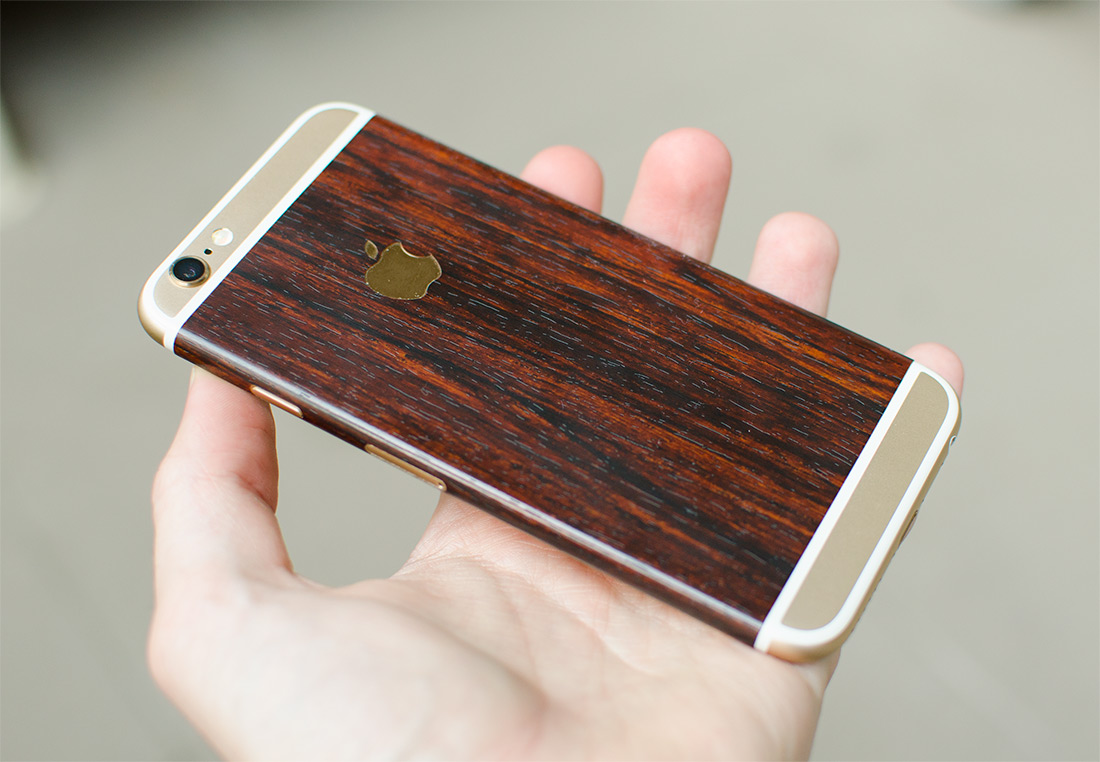It's now been two weeks since I started using the iPhone 6s as my daily driver, and so far the device has been reasonably impressive. Having primarily used Android throughout my time as a smartphone reviewer, iOS 9 hasn't been as annoying to use as I thought it would be, and although there are some flaws to the operating system, it's held up well under scrutiny throughout these past two weeks.
If you're after thoughts on iOS 9, be sure to read the first part of this series, as this second part will focus mostly on the iPhone 6s' hardware, and how it compares to some of the best Android devices I've used this year. Apple is widely respected for their hardware design, both on the inside and outside of their phones, but just how good is it in 2015?
I'll start by expressing my frustration at one of the worst aspects of using an iPhone: the lack of a back button.
Apple has been obsessed with minimalism for years, which is why many of their products include the bare minimum amount of inputs: the MacBook with its ludicrous one USB Type-C port is just one example. The iPhone 6s features home, power, and volume buttons, and for a smartphone this really isn't enough.
By not having a back button, apps are forced to include an on-screen UI element that allows users to return to the previous screen. Normally this would be fine, except that developers can't agree on the positioning, design, size, or icon associated with this action. A user then has to hunt around the screen to find the location of the back action, interpreting whether an arrow or cross is the right button, and then hope for the best.
With Android devices, the inclusion of a universal back button gives users ease of access to the previous screen. The button is always in the same position, it always looks the same, and it's easy to find, allowing you to go back one screen without using much brain power. The action doesn't always deliver consistent results, but at least it's easy to locate and use, which can't be said when using the iPhone 6s or iOS 9.
The good news is that the rest of the iPhone 6s' hardware is excellent. Apple has placed a strong focus on making the best smartphone hardware package possible, and every year they seem to deliver, from the display and SoC, to the camera and physical package.
The body of the iPhone 6s is immaculately crafted. The device is thin, light, and it fits superbly in your hand with just a 4.7-inch display. The metal body, produced from 7000 Series aluminium, feels strong yet classy, and the seamless nature of its construction makes it a truly premium handset. The gold model I received to review looks excellent, especially when paired with a wooden skin from dbrand.
The design isn't perfect, and if I was being picky I'd point out the annoying camera bump, the single bottom facing speaker (front facing speakers are far superior), the proprietary Lightning jack, and sizable bezels. But the way the iPhone 6s succeeds in other areas far outweighs these minor downsides.
The display is just 4.7-inches in size, and the handset itself is only slightly smaller than the Samsung Galaxy S6 with its 5.1-inch display. While the iPhone 6s is undoubtedly a very ergonomic and easy to use phone, I feel Apple could have crammed a slightly larger display into this body, which would always be welcome.
As far as quality is concerned, though, the iPhone 6s display is outstanding. Color reproduction, especially accuracy, is superb from the LED-backlit IPS LCD, as are viewing angles. It isn't the brightest display going around, but images and text look great on this panel.
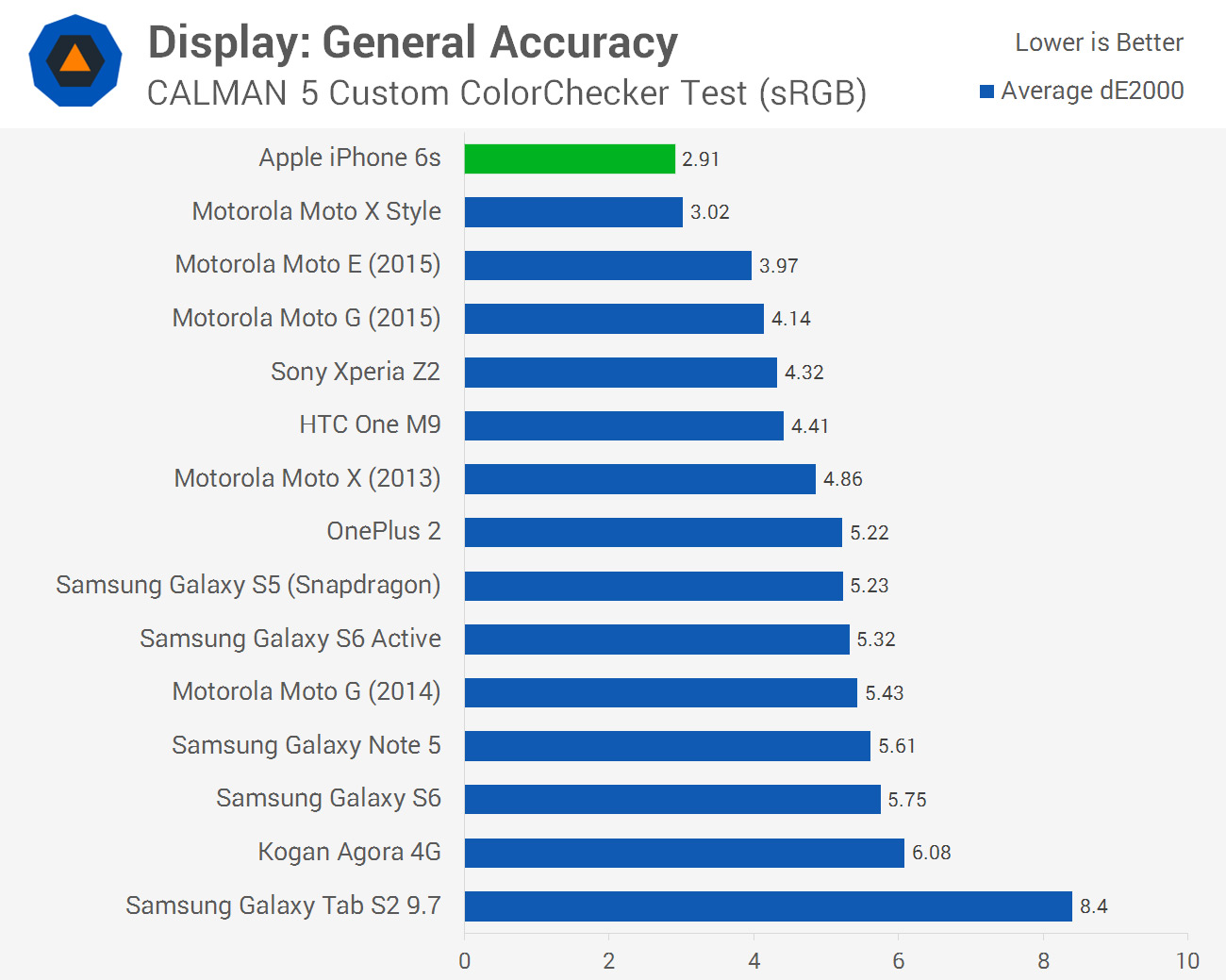
Apple has also avoided the pixel density hype, keeping the 6s at 1334 x 750 (326 PPI), which helps improve both battery life and performance. This is easily the best 720p-class display I've used, and although you don't get the top-level crispness and clarity of a 1440p or 1080p display, the differences in sharpness between the iPhone 6s and the HTC One M9 (1080p) or Galaxy S6 (1440p) are small and largely unnoticeable in regular use.
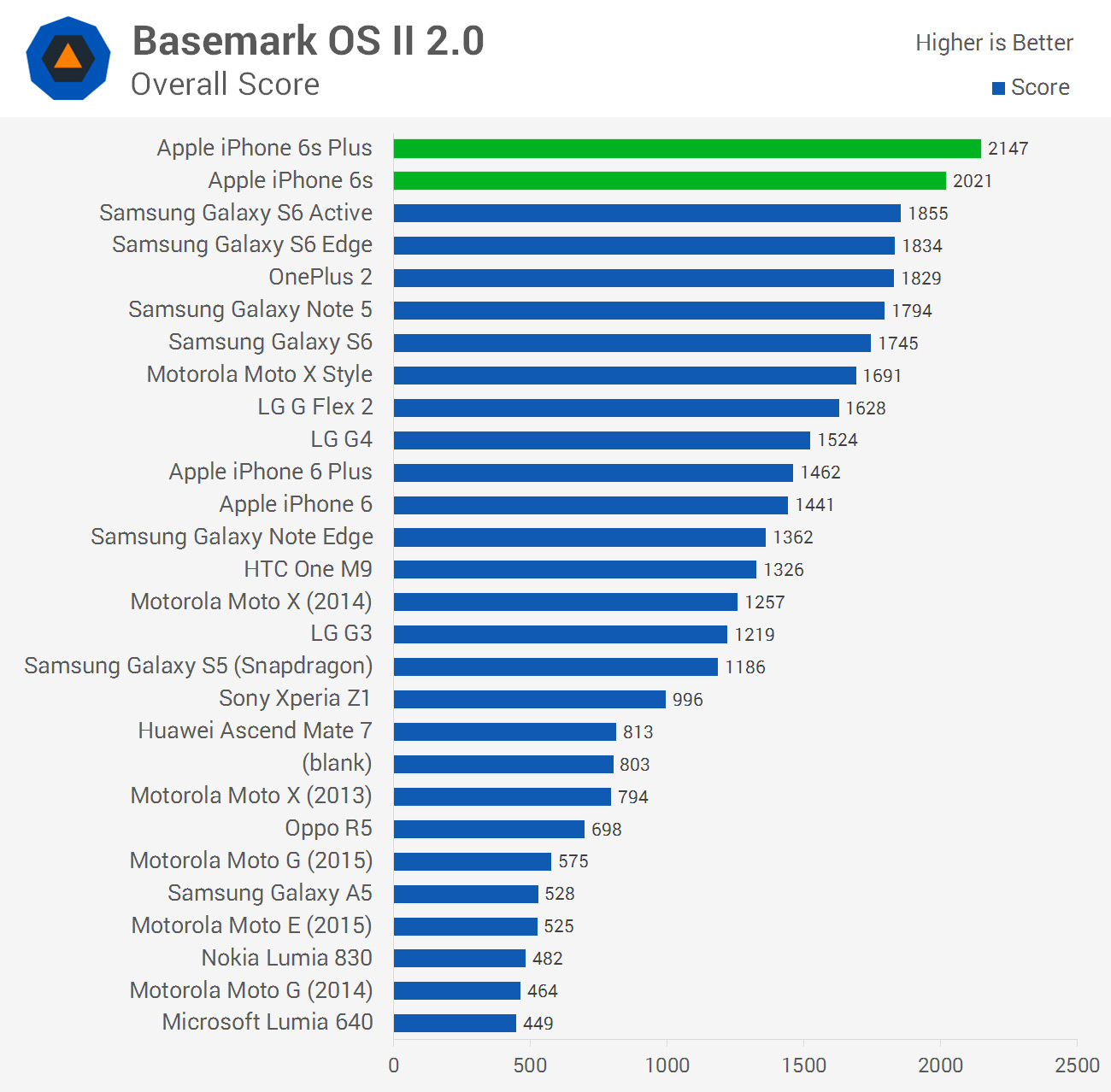
The general performance of the iPhone 6s, in benchmarks and in general use, is superior to any Android phone I've used. The Apple A9 SoC is clearly the best ARM-based mobile chip on the market, and that's a testament to Apple's excellent hardware team and the tight integration between CPU, GPU and software. Apps load extremely quickly, multi-tasking is fluid despite only 2GB of RAM, and gaming performance is at another level compared to 1080p or 1440p Android handsets.
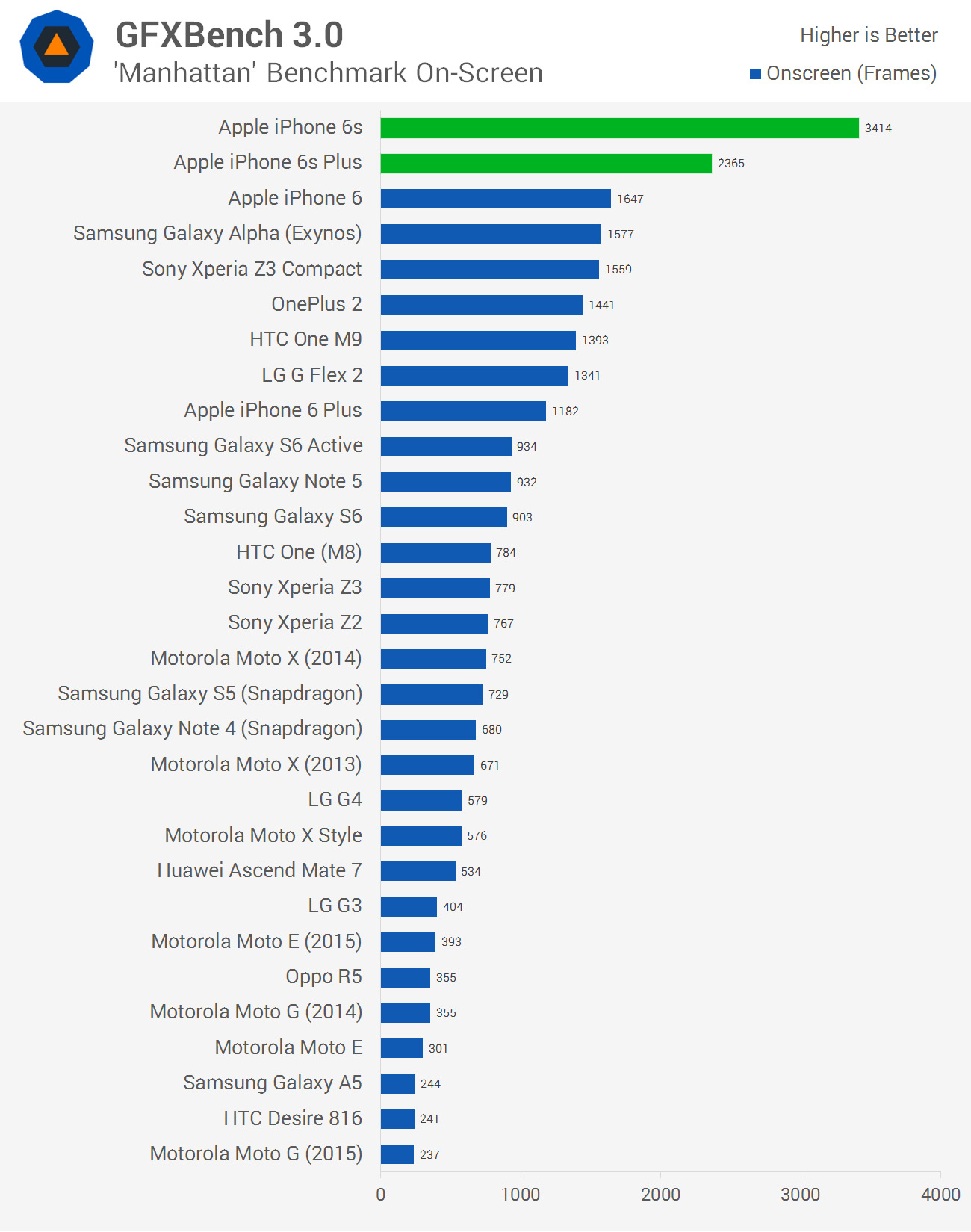
Aside from superior CPU and GPU performance, one of the keys to the iPhone 6s' speed is high-performance NAND. Apple has allegedly used an NVMe controller for their flagship phone's storage, which is faster than pretty much every mobile device on the market. This improves app loading times significantly, and keeps the iPhone fast in every situation.
There are downsides to the storage solution Apple uses for the iPhone 6s, though. There is no microSD card slot in this device, which limits you to the internal storage. This can be fine in some situations, but having 16 GB of storage in the base model is ludicrous for a high-end device, and the price of storage upgrades is exorbitant: $100 to upgrade from 16 GB to 64 GB, and then another $100 to get 128 GB.
In an Android device with expandable storage you could upgrade to 64 GB for just $20, or 128 GB for $60. These microSDs wouldn't provide the same performance as internal NAND, but $200 to upgrade to 128 GB is too expensive. You can legitimately buy a 128 GB PCIe M.2 SSD, with speeds up to 1,600 MB/s, for significantly less than it costs to upgrade to a 128 GB iPhone. That's crazy.
The 12-megapixel camera on the back of the iPhone 6s definitely lived up to the hype in my time with the handset. It doesn't boast the best specs on paper - just an f/2.2 lens and no optical image stabilization - but it's easily one of the best cameras without OIS that I've used. In general, I'd say the Galaxy S6 slightly outperforms the iPhone 6s in camera quality, although the 6s performs remarkably well in low light for a camera with a significant hardware disadvantage.
I don't quite understand why the iPhone 6s Plus comes with OIS but the iPhone 6s doesn't; is there a space limitation in the iPhone 6s that prevents the smaller handset from getting the best camera? Stabilization would be nice for photos and especially videos, because the 4K video quality from this device is superb. Add in slow-motion at 240 fps, and a surprisingly good selfie cam, and I can understand why people use an iPhone for its camera.
I did experiment with Live Photos briefly, but like with an almost identical feature HTC introduced on their One more than two years ago, it's more of a gimmick than a genuinely useful camera feature. You can use 3D Touch with it though, which is mildly amusing.
Battery life has been a contentious aspect of the smaller iPhones since Apple started focusing on slimness a few years ago. The iPhone 6s is a slim handset, at 7.1mm thin, but the small 6.55 Wh (1,715 mAh) battery is clearly a by-product of this focus. Consumers have been screaming at companies for bigger batteries at the expensive of slimness for years, and Apple continues to ignore them.
The end result is a battery that's not quite adequate. During my time with the handset - and admittedly I haven't crunched the battery life figures yet - the iPhone 6s often didn't last a full day, which is poor from a flagship smartphone. Some Android phones I've used this year haven't been great either, especially the Galaxy S6, Moto X Style, and HTC One M9, but there are some options on the market if battery life is the most important feature to you.
So what is there to say about the iPhone 6s after using it for two weeks?
The hardware is undoubtedly excellent. I enjoyed using the fantastic camera, the speedy A9 SoC, the great 4.7-inch display, and the fast Touch ID sensor. 3D Touch is the least useful new feature of the iPhone 6s, though I anticipate it will get better with time. And the ergonomic, lightweight body of the 6s, built from mostly metal, looks and feels great.
The handset isn't the perfect device, though, and there are definitely some areas Apple needs to work on. Storage is fast, but incredibly limited and very expensive to upgrade. The lack of OIS in the smaller 6s hasn't been adequately explained, and no persistent back button is a fundamental design error in both hardware and software. Battery life is also poor, and I wish Apple, like many other manufacturers, placed greater focus on this aspect of the hardware rather than pushing for slimness.
iOS 9 is a pretty solid mobile operating system, although I won't miss many of its features when I inevitably switch back to Android. The OS is fluid to use, consistent in design, and apps found in the App Store are generally good quality across the board. Improvements made in recent years, such as the Control Center and the notification pane, keep iOS well in the race.
This is my gold iPhone 6s, featuring an awesome wooden skin from dbrand
On the other hand, I didn't like the lack of at-a-glance information on the homescreen, and some aspects of the OS are less flexible than Android. Good search functionality is completely missing from iOS, and although Google integration is far better than what you get with Windows Phone, Android still has it covered.
Would I recommend an iPhone to long-time Android users? Probably not, because from a software front, iOS isn't leaps and bounds ahead of the competition, and in many ways Android is as good or even better than Apple's offering. There is a case to be made for those that want a superb hardware package though, and that's where the strengths of the iPhone currently lie.
